#357 TheMonarch
The Monarch is the third in a series of beautiful electronic “bug” boards from the Boldport Club, Project #18 October 2017.
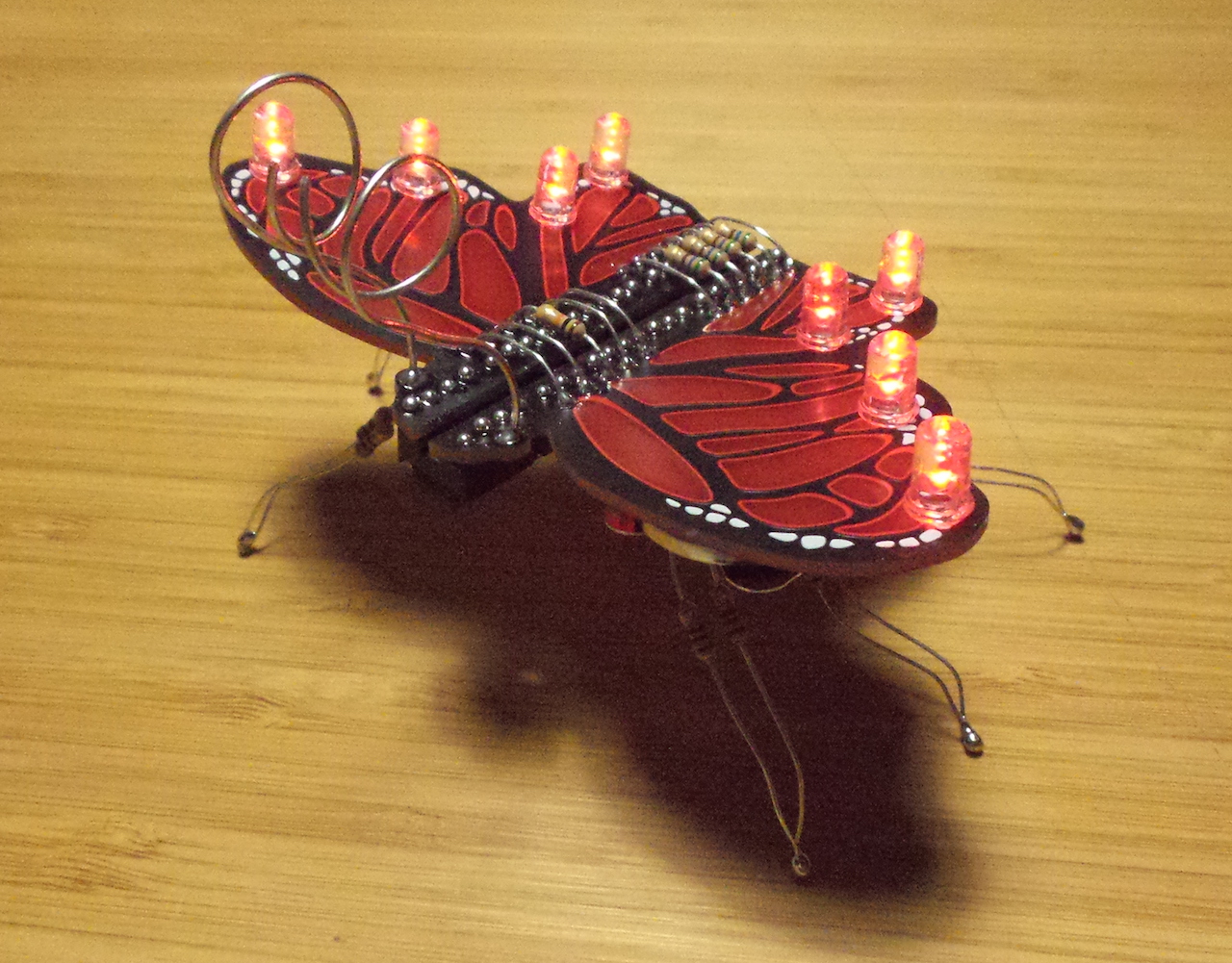
Notes
Parts
| Ref | Item | Qty |
|---|---|---|
| IC1 | 555 IC timer, TI TLC555CP | 1x |
| IC2 | Quad 2-input XOR, TI SN74HC86N | 1x |
| IC3 | Octal D-type flip-flop, TI SN74HC273N | 1x |
| - | IC DIP 8 contact socket, TruConnect DS1009-08 | 1x |
| - | IC DIP 14 contact socket, TruConnect DS1009-14 | 1x |
| - | IC DIP 20 contact socket, TruConnect DS1009-20 | 1x |
| LED1-8 | 5mm clear lens red LEDs, TruOpto OSR5PA5C31C | 8x |
| SW1 | Switch, C&K JS202011SCQN | 1x |
| - | CR2032 batter clip, Multicomp BC-2001 | 1x |
| C1,2 | 1µF capacitors, Suntan TS170R1H105MSBFA0R | 2x |
| R1,2,3 | 10KΩ resistors, Multicomp MCF 0.25W 10K | 3x |
| R4-22 | 560Ω resistors, Multicomp MCF 0.25W 560 | 18x |
| - | 20AWG wire | 16cm |
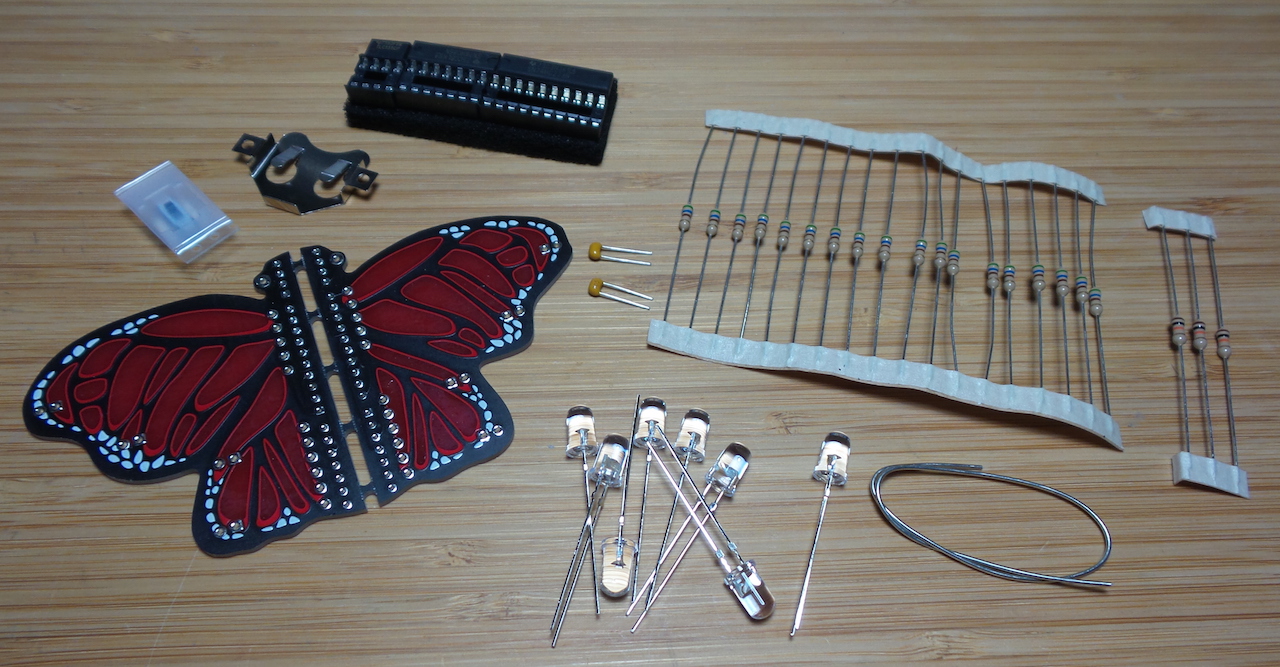
Circuit
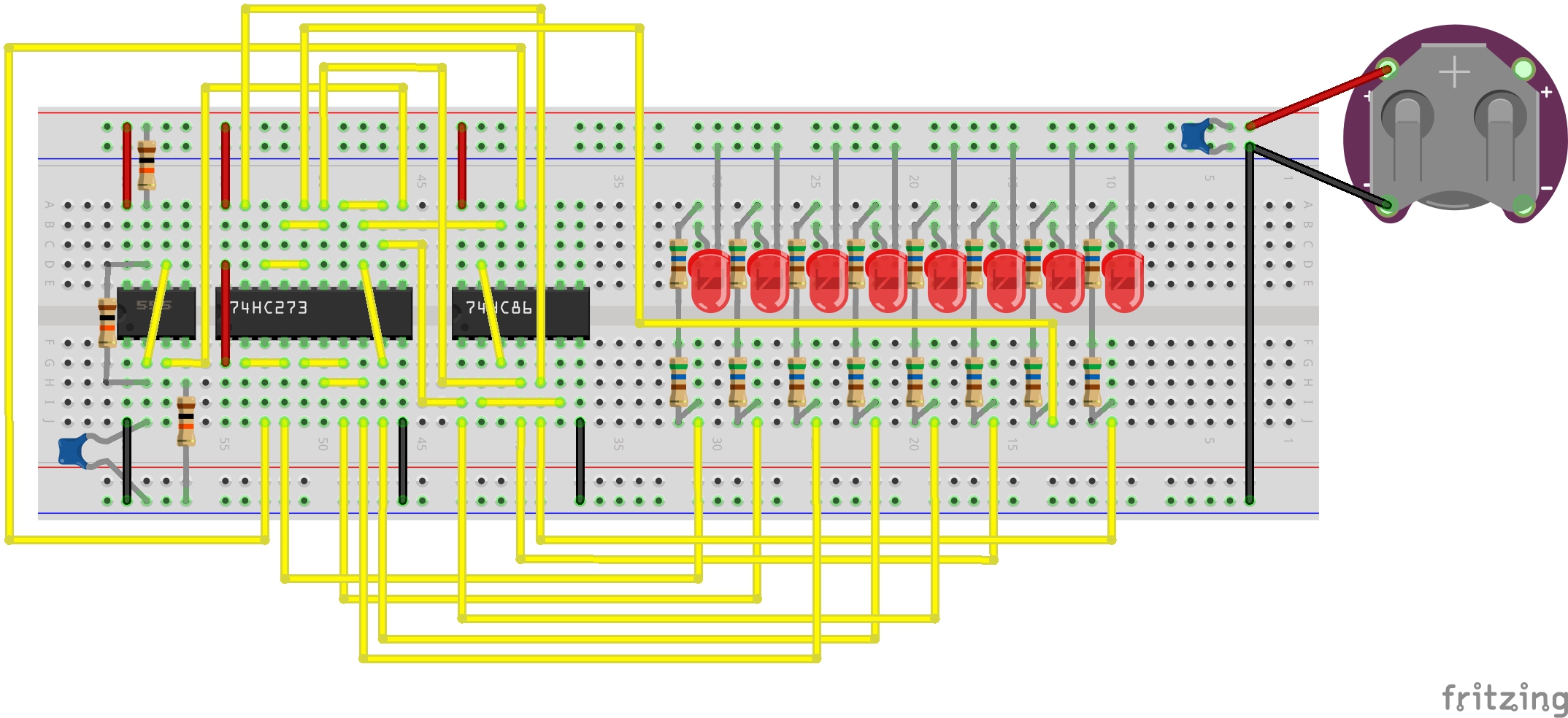
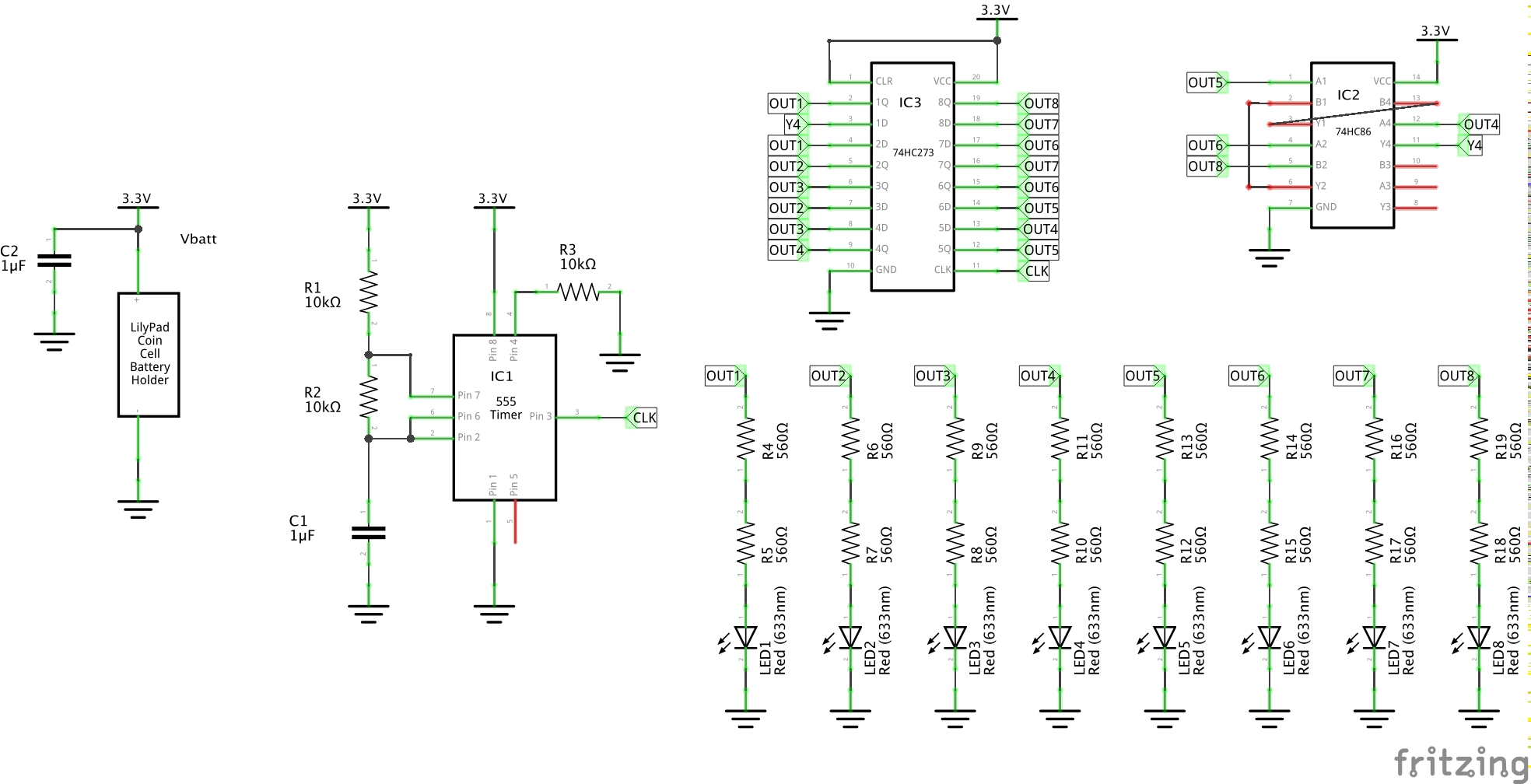
My Take on “How it Works”
The core components:
- a 555 astable timer that is enabled when the “feelers” are touched together, running at around 48 Hz
- 74HC273 D flip-flop, that latches the input (D) to the output (Q) on the rising edge of the clock input
- a 74HC86 quad 2-input XOR
Considering an initial condition of all registers (Q) high:
- XOR Y2 = 1 xor 1 = 0
- XOR Y1 = 1 xor 0 = 1
- XOR Y4 = 1 xor 1 = 0
So on the next 3 clock cycles:
- input D1=0 cascades to Q1,2,3
On the 4th clock cycle, Q4 goes low, XOR Y4 becomes 1, … and so on.
I wrote a little script to simulate this.
$ ./lfsr.py
Which outputs (for the first 32 steps)..
| CLK | Q1 | Q2 | Q3 | Q4 | Q5 | Q6 | Q7 | Q8 |
|---|---|---|---|---|---|---|---|---|
| 0 | 1 | 1 | 1 | 1 | 1 | 1 | 1 | 1 |
| 1 | 0 | 1 | 1 | 1 | 1 | 1 | 1 | 1 |
| 2 | 0 | 0 | 1 | 1 | 1 | 1 | 1 | 1 |
| 3 | 0 | 0 | 0 | 1 | 1 | 1 | 1 | 1 |
| 4 | 0 | 0 | 0 | 0 | 1 | 1 | 1 | 1 |
| 5 | 1 | 0 | 0 | 0 | 0 | 1 | 1 | 1 |
| 6 | 0 | 1 | 0 | 0 | 0 | 0 | 1 | 1 |
| 7 | 1 | 0 | 1 | 0 | 0 | 0 | 0 | 1 |
| 8 | 1 | 1 | 0 | 1 | 0 | 0 | 0 | 0 |
| 9 | 1 | 1 | 1 | 0 | 1 | 0 | 0 | 0 |
| 10 | 1 | 1 | 1 | 1 | 0 | 1 | 0 | 0 |
| 11 | 0 | 1 | 1 | 1 | 1 | 0 | 1 | 0 |
| 12 | 0 | 0 | 1 | 1 | 1 | 1 | 0 | 1 |
| 13 | 0 | 0 | 0 | 1 | 1 | 1 | 1 | 0 |
| 14 | 1 | 0 | 0 | 0 | 1 | 1 | 1 | 1 |
| 15 | 1 | 1 | 0 | 0 | 0 | 1 | 1 | 1 |
| 16 | 0 | 1 | 1 | 0 | 0 | 0 | 1 | 1 |
| 17 | 1 | 0 | 1 | 1 | 0 | 0 | 0 | 1 |
| 18 | 0 | 1 | 0 | 1 | 1 | 0 | 0 | 0 |
| 19 | 0 | 0 | 1 | 0 | 1 | 1 | 0 | 0 |
| 20 | 0 | 0 | 0 | 1 | 0 | 1 | 1 | 0 |
| 21 | 0 | 0 | 0 | 0 | 1 | 0 | 1 | 1 |
| 22 | 0 | 0 | 0 | 0 | 0 | 1 | 0 | 1 |
| 23 | 0 | 0 | 0 | 0 | 0 | 0 | 1 | 0 |
| 24 | 0 | 0 | 0 | 0 | 0 | 0 | 0 | 1 |
| 25 | 1 | 0 | 0 | 0 | 0 | 0 | 0 | 0 |
| 26 | 0 | 1 | 0 | 0 | 0 | 0 | 0 | 0 |
| 27 | 0 | 0 | 1 | 0 | 0 | 0 | 0 | 0 |
| 28 | 0 | 0 | 0 | 1 | 0 | 0 | 0 | 0 |
| 29 | 1 | 0 | 0 | 0 | 1 | 0 | 0 | 0 |
| 30 | 1 | 1 | 0 | 0 | 0 | 1 | 0 | 0 |
| 31 | 1 | 1 | 1 | 0 | 0 | 0 | 1 | 0 |
The repeating pattern is obvious. This is actually an instance of a
linear-feedback shift register (LFSR).
Since The Monarch has XOR taps at registers 8, 6, 5, 4, the feedback function can be expressed as x^8 + x^6 + x^5 + x^4 + 1
With that function, it should repeat every 255 cycles. Which it does..
$ ./lfsr.py -1
| CLK | Q1 | Q2 | Q3 | Q4 | Q5 | Q6 | Q7 | Q8 |
|---|---|---|---|---|---|---|---|---|
| 0 | 1 | 1 | 1 | 1 | 1 | 1 | 1 | 1 |
| 1 | 0 | 1 | 1 | 1 | 1 | 1 | 1 | 1 |
| 2 | 0 | 0 | 1 | 1 | 1 | 1 | 1 | 1 |
| … | ||||||||
| 254 | 1 | 1 | 1 | 1 | 1 | 1 | 1 | 0 |
| 255 | 1 | 1 | 1 | 1 | 1 | 1 | 1 | 1 |
Recently Julian Ilett delved deep into LFSRs in his inimitable style with “The 10,000 Year Shift Register”:
Construction
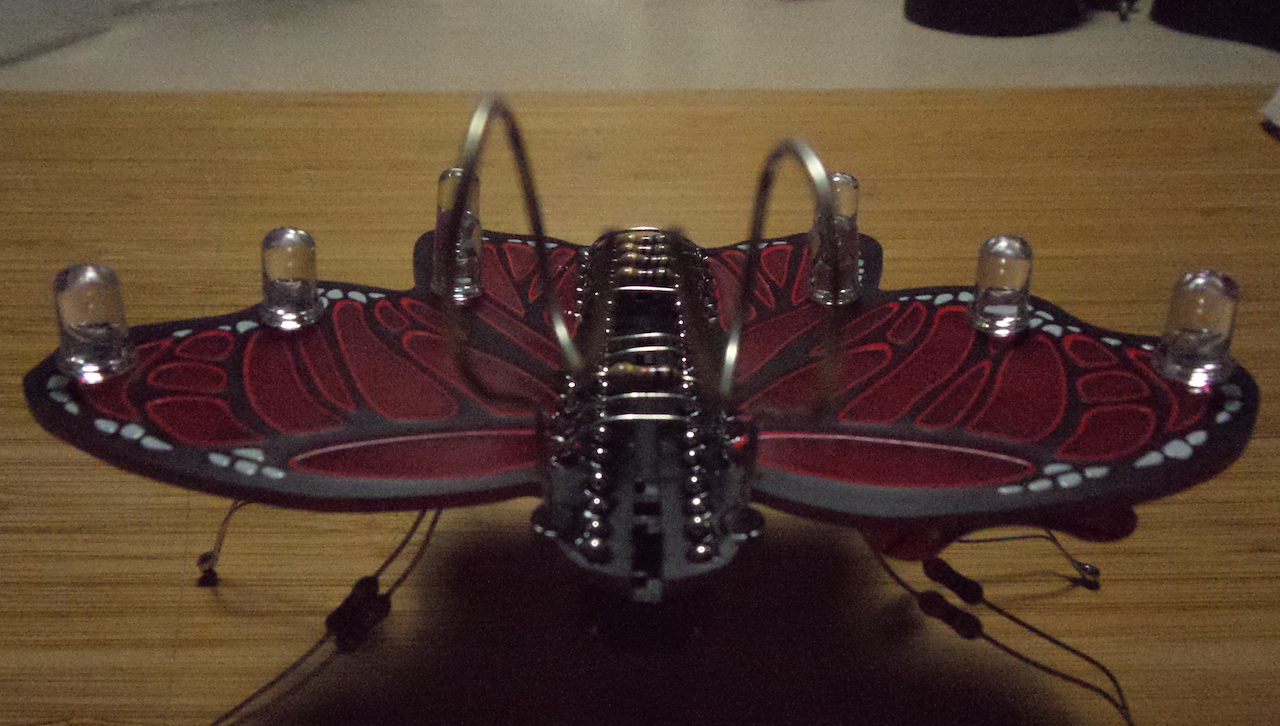
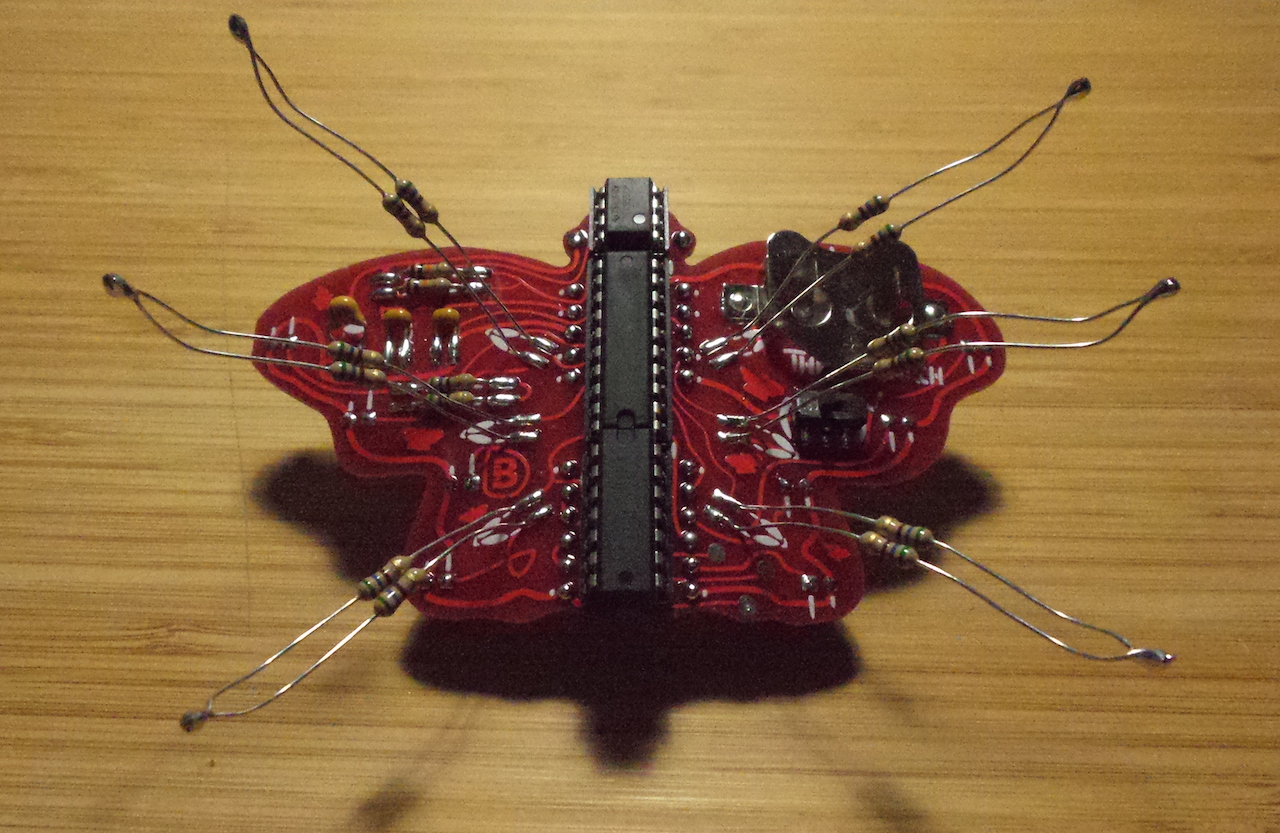

Here is a quick video of the LED sequencing in action:
All Bugs Together
The Monarch joins The Lady and The Gent in the Boldport Bug series. They are all beautiful boards, so I think mounted together would be nice.
I had an Ikea RIBBA picture frame, discarded the front glass and mounted reflective film at the rear. The bugs are all wired into a 2xAA battery pack with switch on the rear.
Here’s a video of the frame:
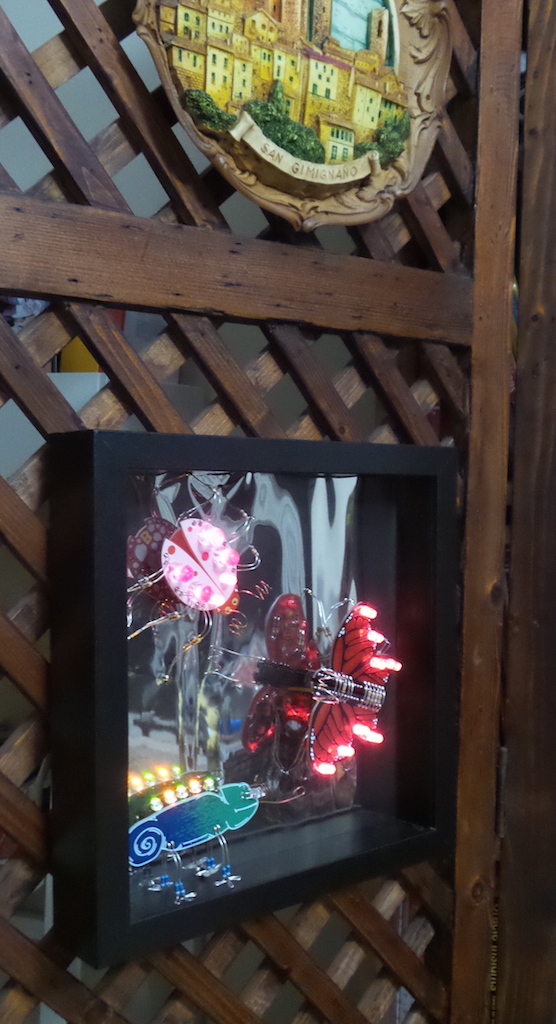
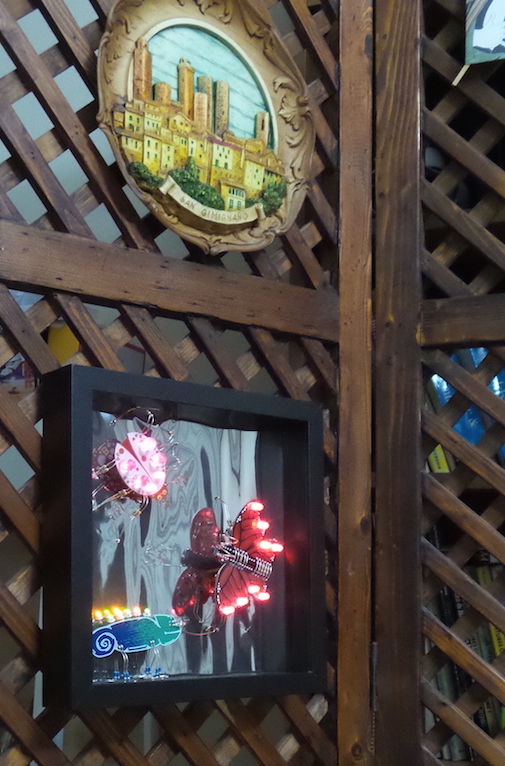
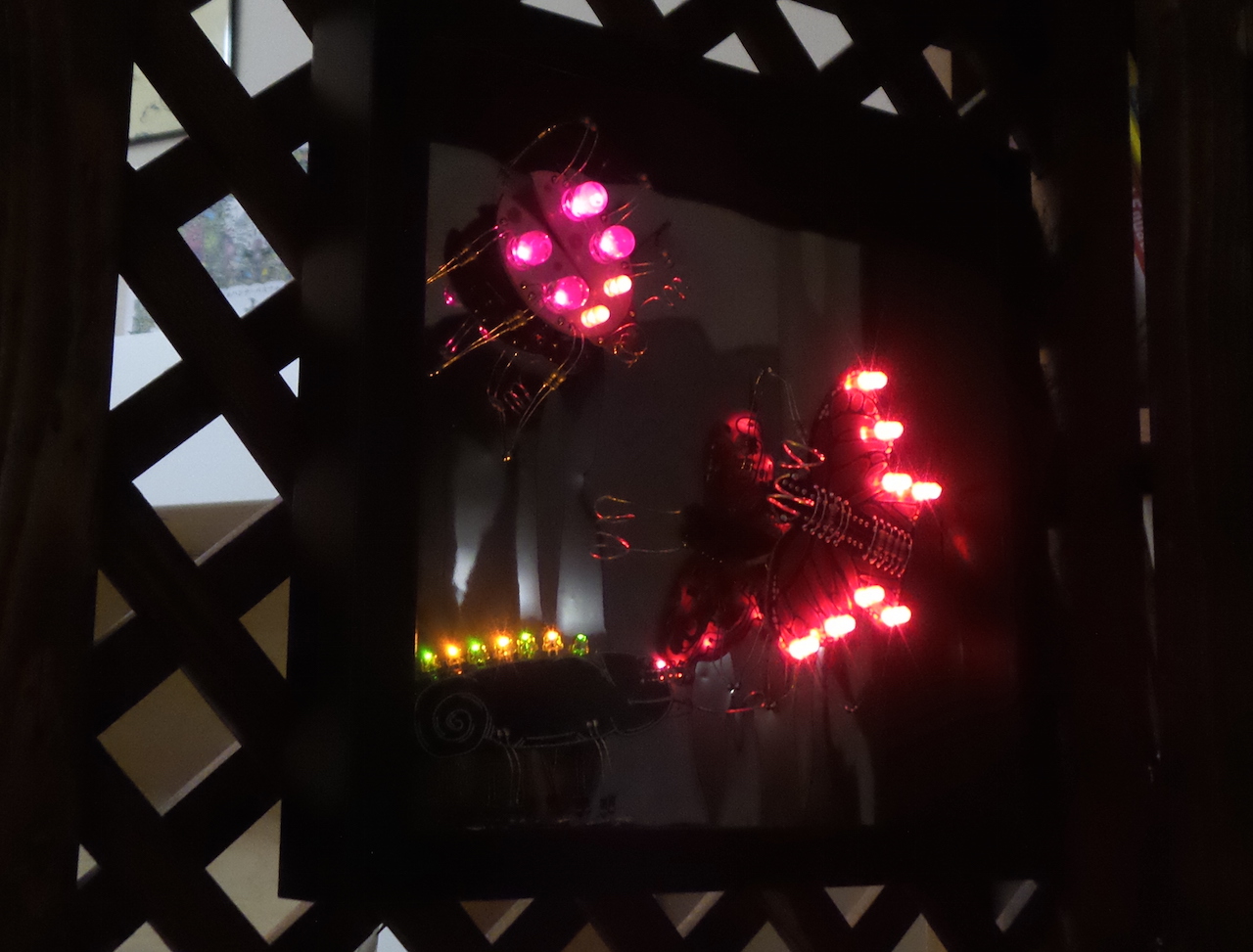
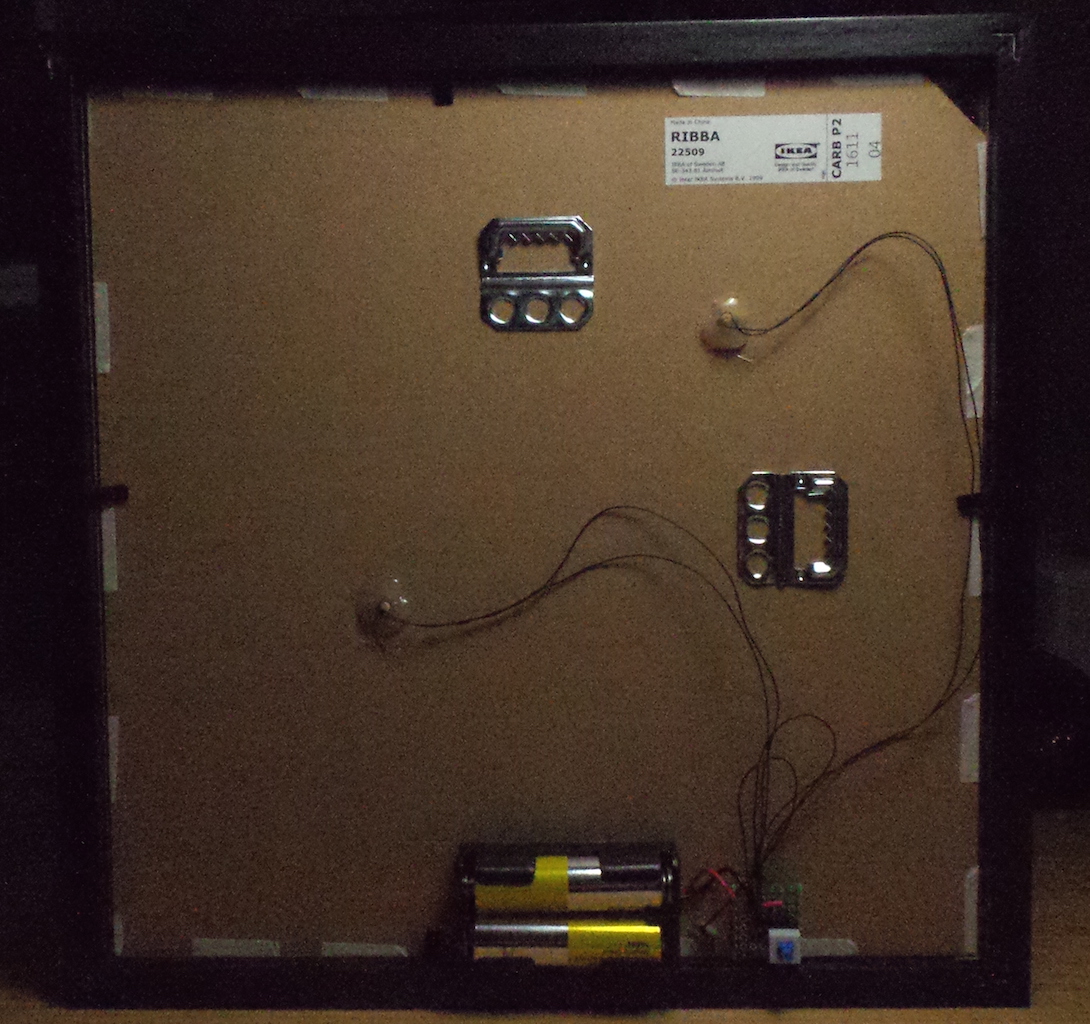
Credits and References
- Monarch - Boldport product information
- Monarch - in the Boldport shop
- Monarch - OSH files on GitHub
- Monarch - club community site, packed with resources for the project
- 74HC273 datasheet
- LM555 datasheet
- 74HC86 datasheet
- Ikea RIBBA Frame
- LFSR - wikipedia
- ..as mentioned on my blog



